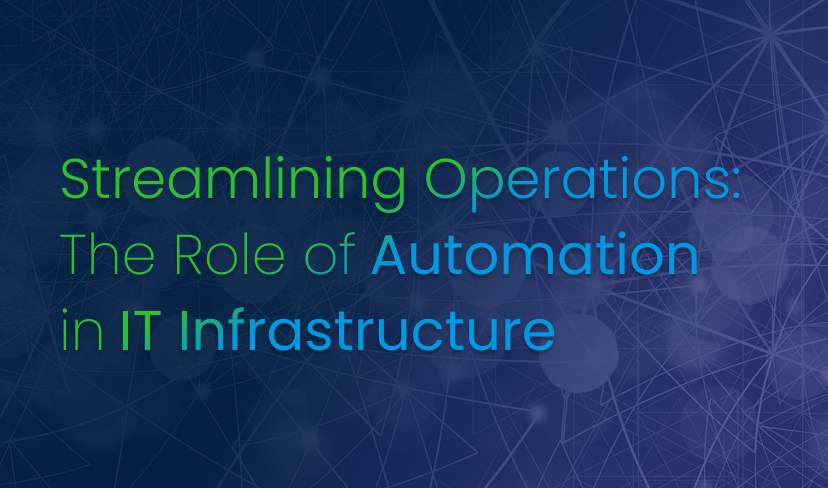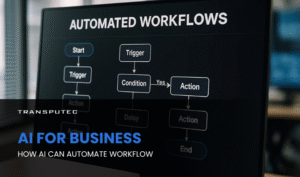Amidst the complexities of managing IT infrastructure, many business owners and employees face a common challenge: the burden of time-consuming, manual tasks that hinder productivity and prevent them from focusing on strategic initiatives.
If you’re tired of grappling with repetitive and error-prone operations that drain valuable resources, then it’s time to explore the power of automation. Automation has become a pivotal element in modern IT infrastructure, revolutionizing the way businesses manage their operations. In this blog post, we will explore the significance of streamlining operations through automation and how it impacts IT infrastructure.
We’ll delve into the benefits of automation, its role in simplifying infrastructure processes, and the growing trend of cloud migration. By the end, you’ll have a comprehensive understanding of how automation can enhance your organisation’s efficiency and effectiveness.
Understanding IT Infrastructure
Before we delve deeper into automation, it’s crucial to grasp the concept of IT infrastructure. IT infrastructure encompasses all the hardware, software, networks, and processes that support an organisation’s IT environment. It includes servers, storage systems, databases, networks, and more. The efficiency and effectiveness of IT infrastructure play a vital role in determining overall operational success.
The Significance of Streamlining Operations
Streamlining operations offers several benefits that can significantly impact an organisation’s performance.
Increased Efficiency
By eliminating manual and repetitive tasks, automation allows IT professionals to focus on more critical and strategic activities. This results in increased efficiency, faster response times, and improved service delivery.
Cost Reduction
Automation helps reduce costs by minimising human errors, optimising resource allocation, and improving overall productivity. By streamlining operations, organisations can achieve cost savings while ensuring reliable and consistent performance.
The Role of Automation in IT Infrastructure
Automation plays a crucial role in transforming IT infrastructure and enabling organisations to achieve streamlined operations. Let’s explore its various aspects.
Definition and Benefits of Automation
Automation refers to the use of technology to perform tasks with minimal human intervention. Its benefits include enhanced accuracy, improved productivity, faster execution, and reduced operational risks. By automating routine and repetitive tasks, organisations can save time and free up resources for more strategic initiatives.
Automation for Infrastructure: Simplifying Operations
Automation simplifies IT infrastructure processes by reducing manual effort, ensuring consistency, and enhancing reliability. Tasks such as server provisioning, network configuration, and system monitoring can be automated, eliminating the possibility of human error and increasing overall system stability.
Cloud Migration: Streamlining IT Infrastructure
Cloud migration is a key trend in modern IT infrastructure management. By moving applications and data to the cloud, organisations can leverage scalability, flexibility, and cost savings. Automation plays a crucial role in the successful migration of infrastructure to the cloud, ensuring smooth transitions and efficient operations.
Implementing Automation in IT Infrastructure
To implement automation effectively, organisations need to follow a systematic approach.
Identifying Manual Processes to Automate
The first step is to identify manual processes that can be automated. This involves analysing existing workflows, understanding pain points, and determining which tasks can be streamlined through automation.
Selecting the Right Automation Tools
Choosing the appropriate automation tools is crucial for success. Organisations must evaluate available options, considering factors such as compatibility, scalability, ease of use, and integration capabilities. Selecting tools that align with specific business requirements is essential.
Overcoming Challenges in Automation
While automation offers numerous benefits, it also presents challenges that need to be addressed. Organisations must overcome obstacles such as resistance to change, cultural shifts, and potential disruptions during the implementation phase. By understanding and proactively managing these challenges, businesses can maximise the effectiveness of automation.
Key Considerations for Successful Automation
To ensure successful automation in IT infrastructure, organisations should keep several key considerations in mind.
Security and Data Privacy
As automation involves the handling of sensitive data and access to critical systems, ensuring robust security measures is of utmost importance. Organisations must implement appropriate security controls and comply with relevant data privacy regulations to protect against potential risks.
Scalability and Flexibility
Automation solutions should be scalable and flexible to accommodate changing business needs. As organisations grow, their IT infrastructure requirements evolve, necessitating automation tools that can adapt and scale accordingly.
Collaboration and Communication
Effective collaboration and communication are vital for successful automation initiatives. IT teams, business stakeholders, and automation experts need to work together to define goals, establish clear workflows, and ensure seamless integration of automation into existing processes.
The Impact of Automation on Businesses
The impact of automation on businesses is far-reaching. It enables organisations to streamline their operations, achieve greater efficiency, reduce costs, and improve customer satisfaction. By embracing automation, companies can position themselves for growth and gain a competitive advantage in the marketplace.
Conclusion
Automation has emerged as a game-changer in the realm of IT infrastructure. By streamlining operations and simplifying processes, organisations can achieve enhanced efficiency and effectiveness. The role of automation extends from optimising infrastructure to facilitating cloud migration. To unlock the full potential of automation, organisations must carefully plan their automation journey, select appropriate tools, and overcome challenges. Embracing automation can pave the way for organisations to thrive in the dynamic and fast-paced digital landscape.
Take the first step towards streamlined operations and enhanced efficiency. Contact us today to get in touch with our experts and discover how Transputec can help you leverage automation to drive success. Embrace the future of IT infrastructure and embark on a transformative journey with Transputec.







